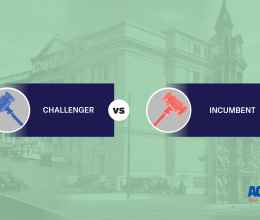It doesn’t take too much imagination to see the heads slowly wagging back and forth at the local coffee shop when they learn the news. I can even see the eye rolls, too.
No, not from surprise or disbelief, but from the senselessness of it all.
What’s Going On?
In case you hadn’t heard, the Summit County Sheriff’s Office freed 71 people from jail because of a $3.6 million budget shortfall, according to Cleveland.com. In an effort to mitigate this, Sheriff Steve Barry shut down one of the jail’s wings to reduce the facility’s capacity by 149 beds—from 671 to 522.
On the same day these prisoners were dumped on the street—with virtually no support or resources—three of them were arrested again. Even more of the released detainees may end up back in jail. According to Barry, most of those who were released were non-violent, low-level offenders. Of the three men who were arrested, one used heroin and the other two were picked up primarily for petty theft of basic needs—food and a coat.
Read our Letter to the Editor about the Summit County prisoner release.
The Big Picture
However, Summit County’s budget woes are only a small piece of a bigger problem. Thanks to the failed War on Drugs, the United States has the largest prison population in the world, with Ohio having the sixth largest prison population among the states. America’s tough-on-crime policies, which prioritize imprisonment over treatment and rehabilitation, have resulted in overcrowded prisons and jails, severely straining community resources nationwide and costing taxpayers billions of dollars every year.
It only gets worse. It’s an endless cycle of poverty and incarceration. When more people are in jail and leave with criminal records, they struggle to find employment and housing, leading many to become incarcerated again. As a consequence, fewer revenues go into the local economy, eroding the tax base further.
Stop the Mass Incarceration Tsunami
The answer is not opening up jail cells nor is it building bigger facilities, if money were available. These stop-gap measures do not address systemic problems and only contribute to the revolving door of mass incarceration.
It’s time to aggressively work on the underlying problems first:
- Put in place evidence-base reforms, such as mental health and addiction treatments.
- Properly fund social service and education programs that will help people find consistent employment and obtain affordable housing out of jail.
- For those who sit in jail simply because they can’t afford to post the bond, sensible pre-trial release programs will reduce costs and shrink jail populations.
These types of evidence-based reforms when implemented in cities and counties across the country have reduced the need for jail beds while enhancing public safety. For instance New Orleans’ implementation of a single reform saved the city $3 million in jail operating costs in just three months. In Ft. Lauderdale, reforms reduced its jail population by 25 percent.
For news and resources about mass incarceration and other criminal justice issues, visit our website.
So, what’s the real solution to decreasing Summit County’s jail population?
Simply releasing inmates without offering re-entry or treatment services will not solve the county’s jailhouse woes. It also won’t lessen America’s addiction to mass incarceration. Common-sense, evidence-based reforms will. (Heads wagging, YES!)









